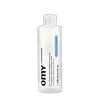What's inside
What's inside
 Key Ingredients
Key Ingredients

 Benefits
Benefits

 Ingredients Side-by-side
Ingredients Side-by-side

Water
Skin ConditioningRosa Damascena Callus
AntimicrobialLactobacillus/Arundinaria Gigantea Ferment Filtrate
Skin ConditioningCitrus Aurantium Amara Peel
Skin ConditioningPropanediol
SolventDecyl Glucoside
CleansingColloidal Oatmeal
AbsorbentSodium Lactate
BufferingSodium PCA
HumectantGluconolactone
Skin ConditioningGarcinia Mangostana Fruit Extract
Skin ConditioningCamellia Sinensis Callus
AntimicrobialCucumis Sativus Fruit Extract
EmollientSodium Hyaluronate
HumectantSodium Benzoate
MaskingSodium Phytate
Simmondsia Chinensis Seed Extract
AbrasiveMelia Azadirachta Leaf Extract
Skin ConditioningMelia Azadirachta Flower Extract
Skin ConditioningAmino Esters-1
Skin ConditioningBetaine
HumectantCoccinia Indica Fruit Extract
Skin ConditioningPearl Powder
Water, Rosa Damascena Callus, Lactobacillus/Arundinaria Gigantea Ferment Filtrate, Citrus Aurantium Amara Peel, Propanediol, Decyl Glucoside, Colloidal Oatmeal, Sodium Lactate, Sodium PCA, Gluconolactone, Garcinia Mangostana Fruit Extract, Camellia Sinensis Callus, Cucumis Sativus Fruit Extract, Sodium Hyaluronate, Sodium Benzoate, Sodium Phytate, Simmondsia Chinensis Seed Extract, Melia Azadirachta Leaf Extract, Melia Azadirachta Flower Extract, Amino Esters-1, Betaine, Coccinia Indica Fruit Extract, Pearl Powder
Alternatives
Ingredients Explained
These ingredients are found in both products.
Ingredients higher up in an ingredient list are typically present in a larger amount.
Gluconolactone is a PHA. PHAs are a great gentle alternative to traditional AHAs.
When applied, Gluconolactone has the same affect on skin as AHAs such as lactic acid. It helps dissolve the dead skin cells in the top layer of your skin. This improves texture and brightens the skin.
PHAs are more gentle than AHAs due to their larger structure. They do not penetrate as deeply as AHAs and take a longer time to dissolve dead cells. Studies show PHAs do not cause as much irritation.
Gluconolactone has some interesting properties:
In a 2004 study, Gluconolactone was found to prevent UV damage in mouse skin cells and has not been found to increase sun sensitivity. However, we still recommend wearing SPF daily.
This ingredient is is an created by reacting gluconic acid with an alcohol.
Learn more about GluconolactoneSodium Benzoate is a preservative. It's used in both cosmetic and food products to inhibit the growth of mold and bacteria. It is typically produced synthetically.
Both the US FDA and EU Health Committee have approved the use of sodium benzoate. In the US, levels of 0.1% (of the total product) are allowed.
Sodium benzoate works as a preservative by inhibiting the growth of bacteria inside of cells. It prevents the cell from fermenting a type of sugar using an enzyme called phosphofructokinase.
It is the salt of benzoic acid. Foods containing sodium benzoate include soda, salad dressings, condiments, fruit juices, wines, and snack foods.
Studies for using ascorbic acid and sodium benzoate in cosmetics are lacking, especially in skincare routines with multiple steps.
We always recommend speaking with a professional, such as a dermatologist, if you have any concerns.
Learn more about Sodium BenzoateWater. It's the most common cosmetic ingredient of all. You'll usually see it at the top of ingredient lists, meaning that it makes up the largest part of the product.
So why is it so popular? Water most often acts as a solvent - this means that it helps dissolve other ingredients into the formulation.
You'll also recognize water as that liquid we all need to stay alive. If you see this, drink a glass of water. Stay hydrated!
Learn more about Water